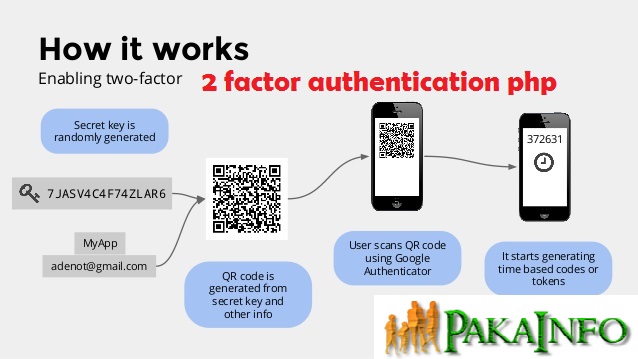Secret Key Generation In Php
Key generation is the process of generating keys in cryptography. A key is used to encrypt and decrypt whatever data is being encrypted/decrypted.
- Secret Key Generation In Php 2017
- Secret Key Generation In Php Pdf
- Key Generator
- Secret Key Generation In Php Pdf
Mar 12, 2012 How to generate a secret key with Python. GitHub Gist: instantly share code, notes, and snippets. CryptGPG does not yet support generating GnuPG keys. Generating a GnuPG key for use with CryptGPG is much the same as generating any other GnuPG key on a system. Though CryptGPG supports specifying the keyring to use, CryptGPG, by default, uses the keyring of the current user.If using CryptGPG with a webserver such as Apache, the current user is the Apache user and the key. In this tutorial you will learn how to integrate Razorpay payment gateway using PHP in easy steps with live example. Step1: Create Razorpay Account First we need to create account on Razorpay and generate KeyId and Secret Key. We will keep created Razorpay account in test mode to test payment functionality. I am developing a platform that uses several secret keys for several usages: key1 for hashing passwords (using pbkdf2-hmac-sha256), key2 to generate non-repeating unpredictable uuids (using aes-128 and a counter), etc. Instead of storing different keys, I thought to generate them from a single key, i.e.
A device or program used to generate keys is called a key generator or keygen.
Generation in cryptography[edit]
Modern cryptographic systems include symmetric-key algorithms (such as DES and AES) and public-key algorithms (such as RSA). Symmetric-key algorithms use a single shared key; keeping data secret requires keeping this key secret. Public-key algorithms use a public key and a private key. The public key is made available to anyone (often by means of a digital certificate). A sender encrypts data with the receiver's public key; only the holder of the private key can decrypt this data.
Since public-key algorithms tend to be much slower than symmetric-key algorithms, modern systems such as TLS and SSH use a combination of the two: one party receives the other's public key, and encrypts a small piece of data (either a symmetric key or some data used to generate it). The remainder of the conversation uses a (typically faster) symmetric-key algorithm for encryption.

Computer cryptography uses integers for keys. In some cases keys are randomly generated using a random number generator (RNG) or pseudorandom number generator (PRNG). A PRNG is a computeralgorithm that produces data that appears random under analysis. PRNGs that use system entropy to seed data generally produce better results, since this makes the initial conditions of the PRNG much more difficult for an attacker to guess. Another way to generate randomness is to utilize information outside the system. veracrypt (a disk encryption software) utilizes user mouse movements to generate unique seeds, in which users are encouraged to move their mouse sporadically. In other situations, the key is derived deterministically using a passphrase and a key derivation function.
Many modern protocols are designed to have forward secrecy, which requires generating a fresh new shared key for each session.
Waste ink reset key generator. Classic cryptosystems invariably generate two identical keys at one end of the communication link and somehow transport one of the keys to the other end of the link.However, it simplifies key management to use Diffie–Hellman key exchange instead.
The simplest method to read encrypted data without actually decrypting it is a brute-force attack—simply attempting every number, up to the maximum length of the key. Therefore, it is important to use a sufficiently long key length; longer keys take exponentially longer to attack, rendering a brute-force attack impractical. Currently, key lengths of 128 bits (for symmetric key algorithms) and 2048 bits (for public-key algorithms) are common.
Generation in physical layer[edit]
Wireless channels[edit]
A wireless channel is characterized by its two end users. By transmitting pilot signals, these two users can estimate the channel between them and use the channel information to generate a key which is secret only to them.[1] The common secret key for a group of users can be generated based on the channel of each pair of users.[2]Sims 3 key code generator download.
Secret Key Generation In Php 2017
Optical fiber[edit]
A key can also be generated by exploiting the phase fluctuation in a fiber link.[clarification needed]
See also[edit]
- Distributed key generation: For some protocols, no party should be in the sole possession of the secret key. Rather, during distributed key generation, every party obtains a share of the key. A threshold of the participating parties need to cooperate to achieve a cryptographic task, such as decrypting a message.
References[edit]
- ^Chan Dai Truyen Thai; Jemin Lee; Tony Q. S. Quek (Feb 2016). 'Physical-Layer Secret Key Generation with Colluding Untrusted Relays'. IEEE Transactions on Wireless Communications. 15 (2): 1517–1530. doi:10.1109/TWC.2015.2491935.
- ^Chan Dai Truyen Thai; Jemin Lee; Tony Q. S. Quek (Dec 2015). 'Secret Group Key Generation in Physical Layer for Mesh Topology'. 2015 IEEE Global Communications Conference (GLOBECOM). San Diego. pp. 1–6. doi:10.1109/GLOCOM.2015.7417477.
Check BNN and Bulbanews for up-to-date Pokémon news and discuss it on the forums or in the Bulbagarden Discord server.
| |||||||||
| |||||||||
| |||||||||
The Secret Key (Japanese: ひみつのカギSecret Key) is a Key Item introduced in Generation I. It is the key to Cinnabar Gym.
- 1In the core series games
In the core series games
Price

|
Effect
The Secret Key opens up Cinnabar Gym, allowing the player to challenge Blaine.
Description
|
Acquisition
|
In other languages
| |||||||||||||
Secret Key Generation In Php Pdf
See also
Key Generator
| This item article is part of Project ItemDex, a Bulbapedia project that aims to write comprehensive articles on all items. |